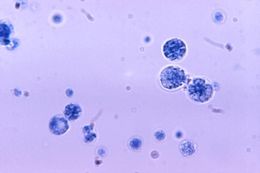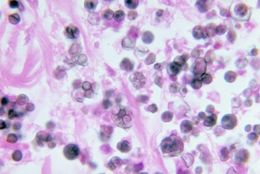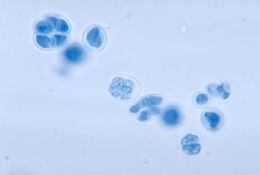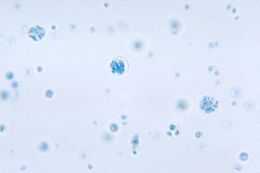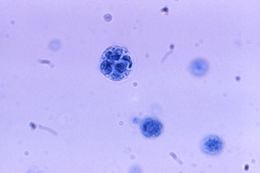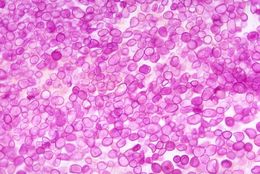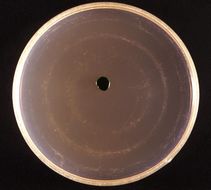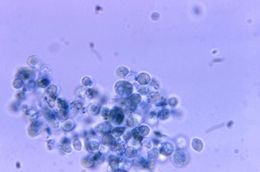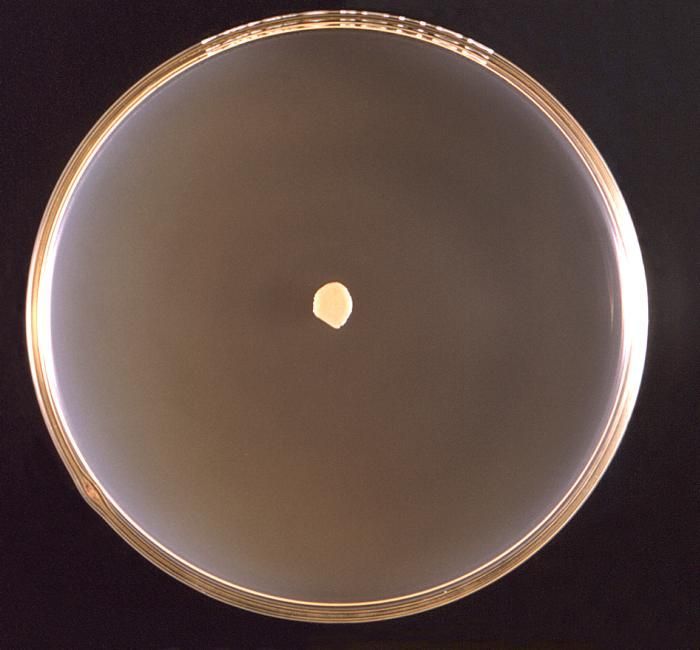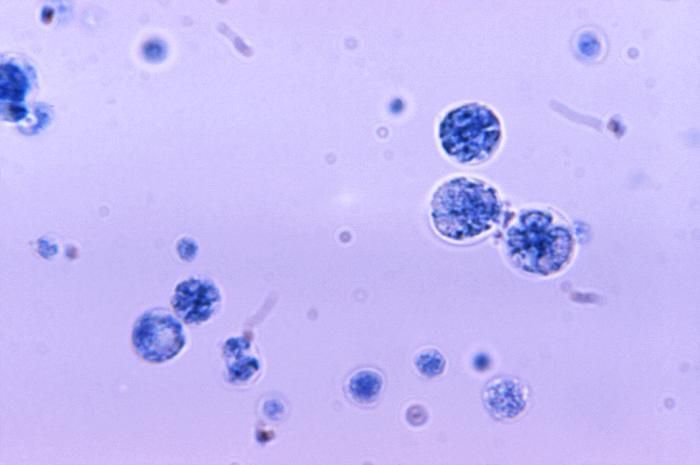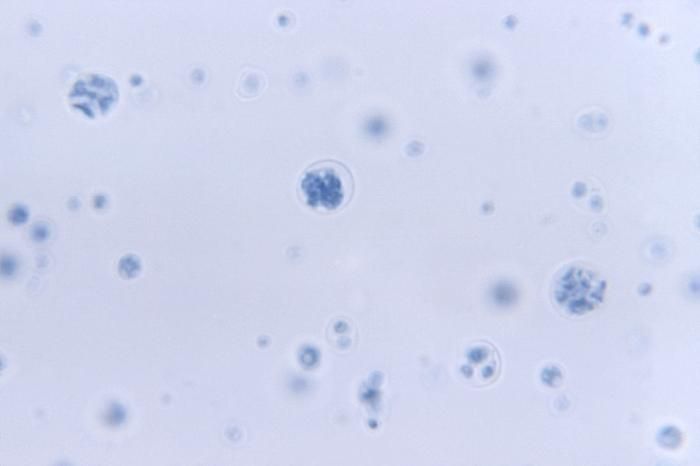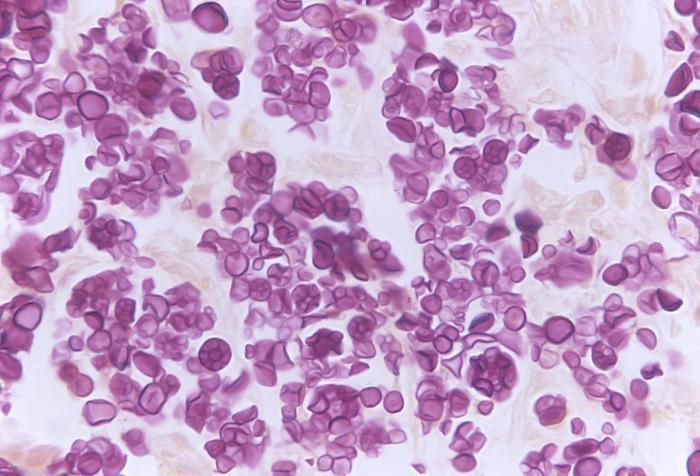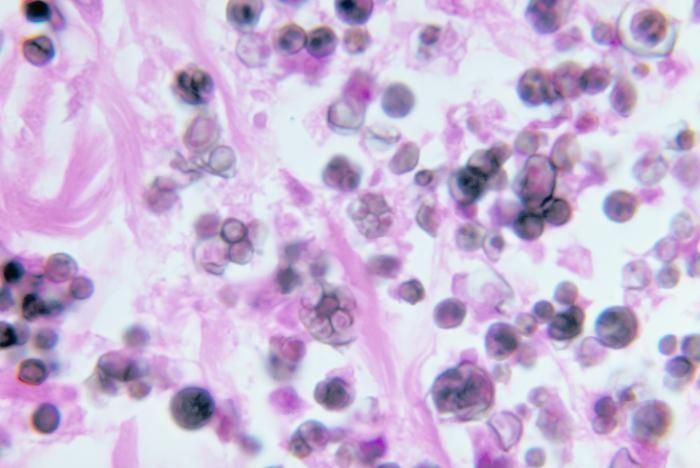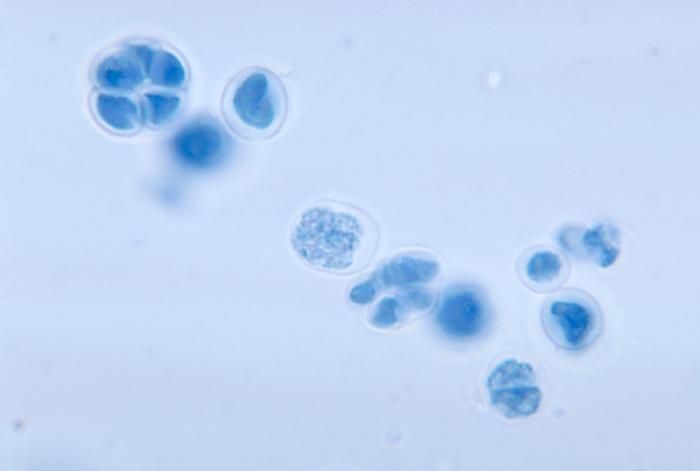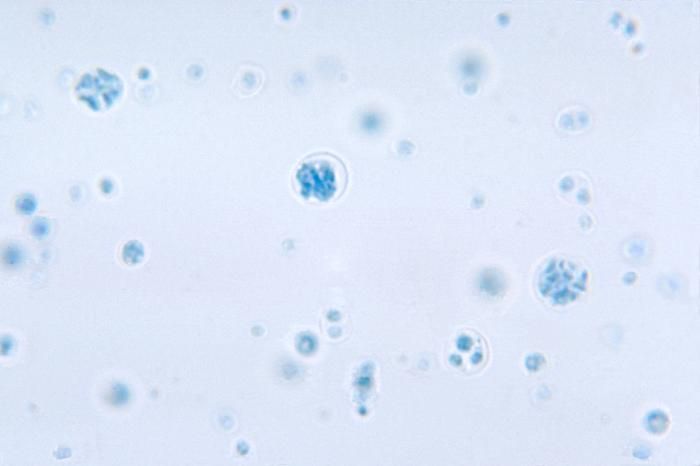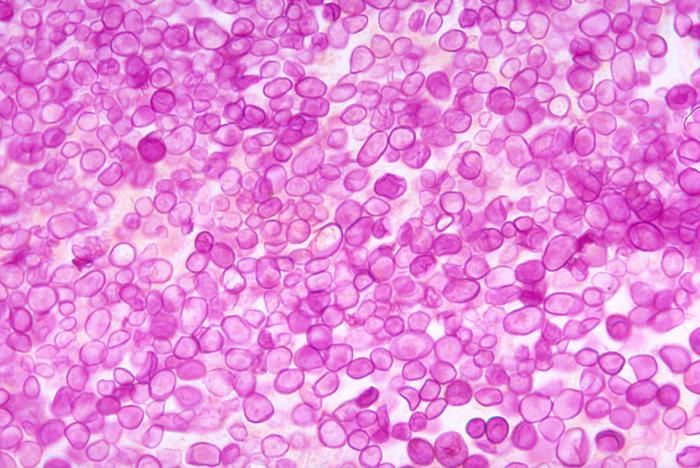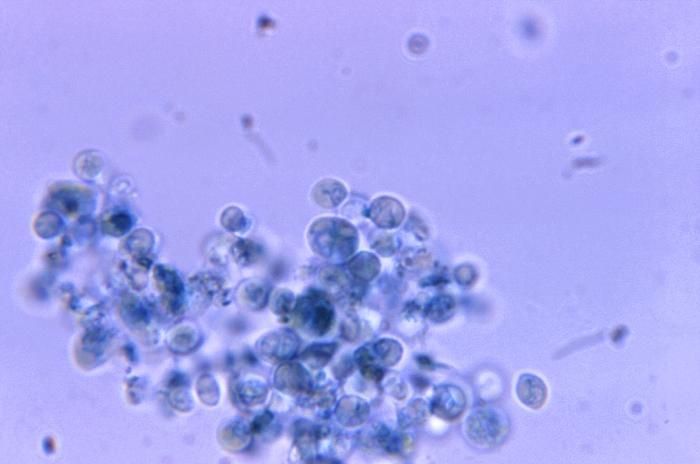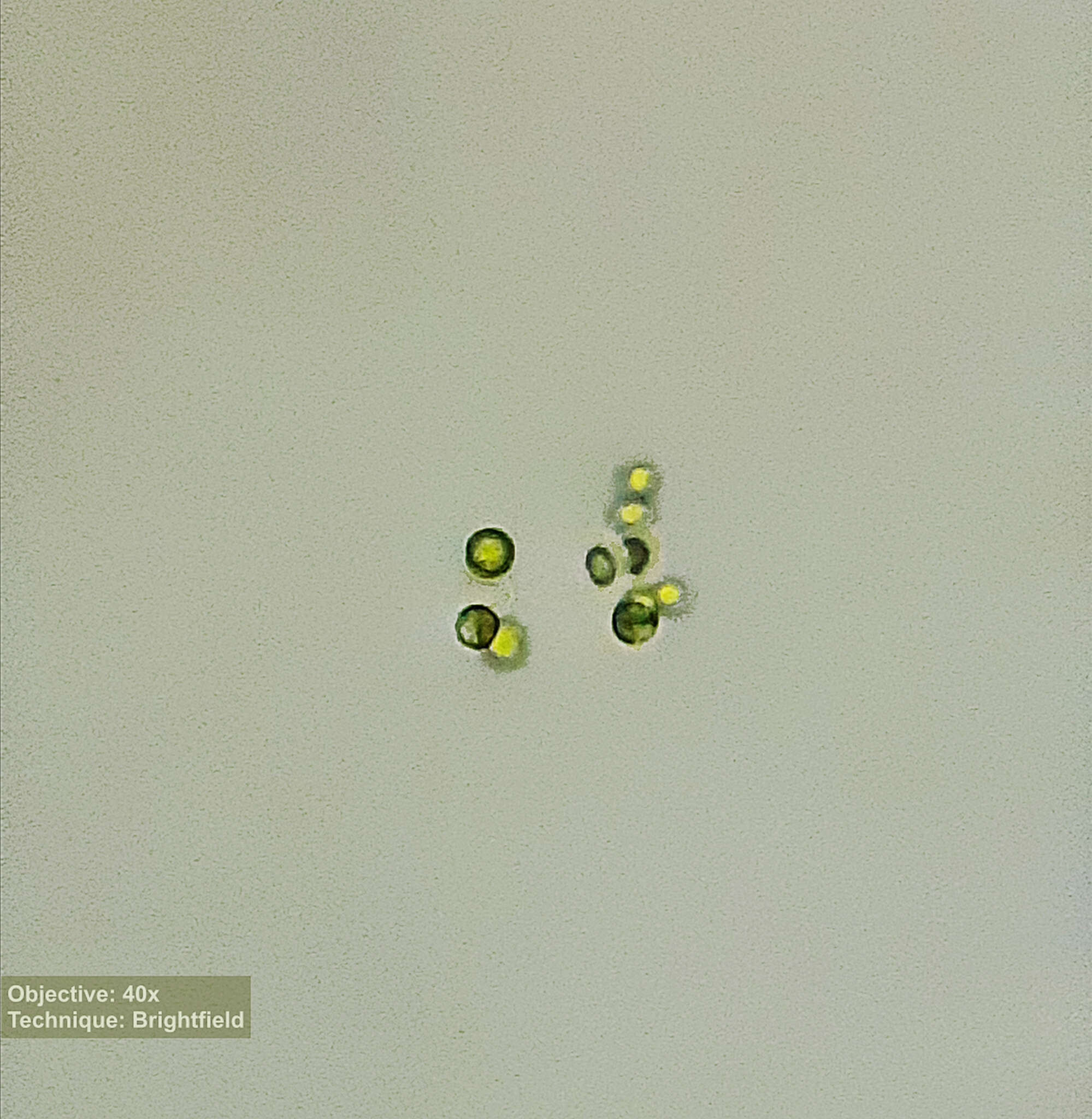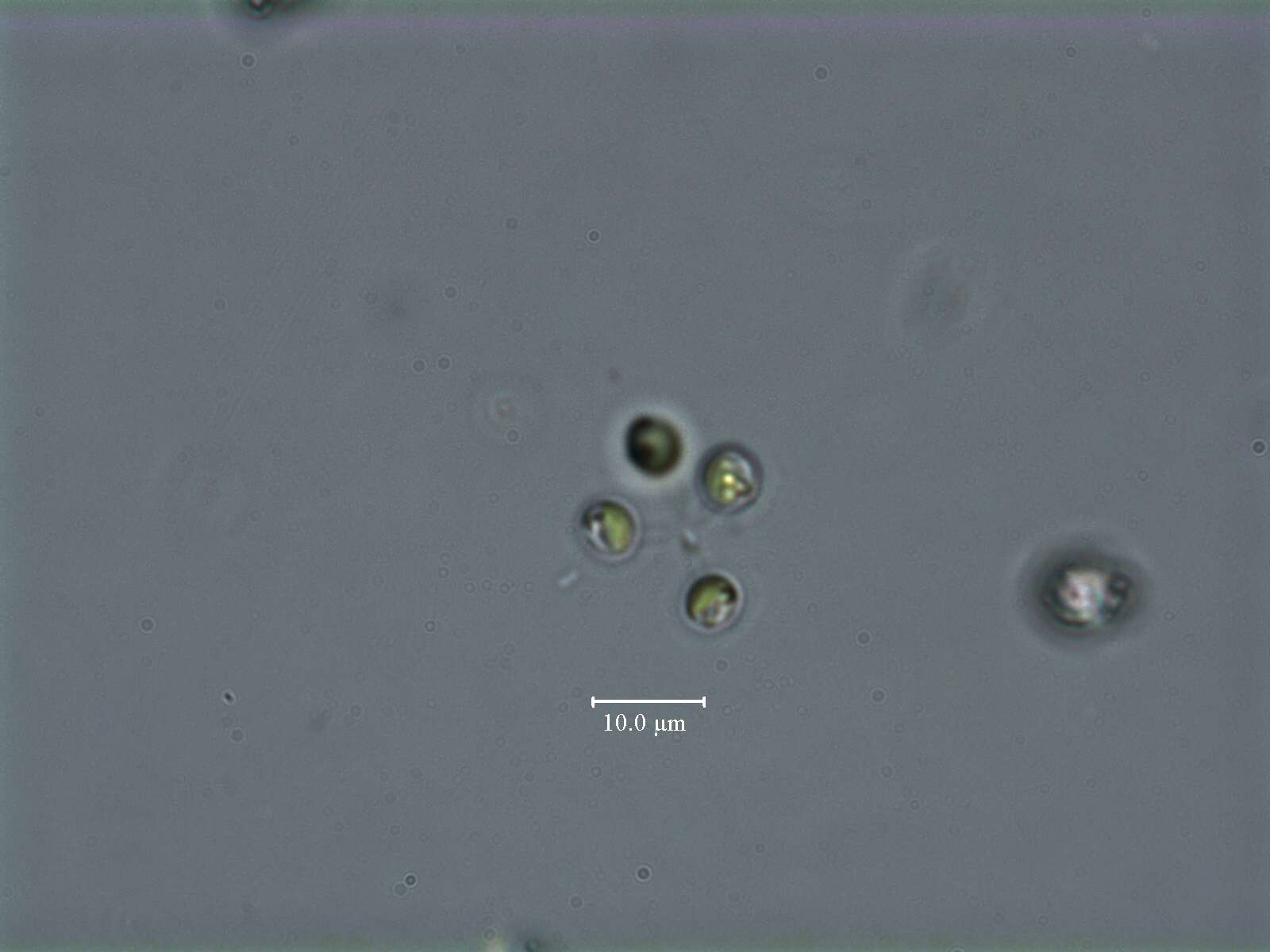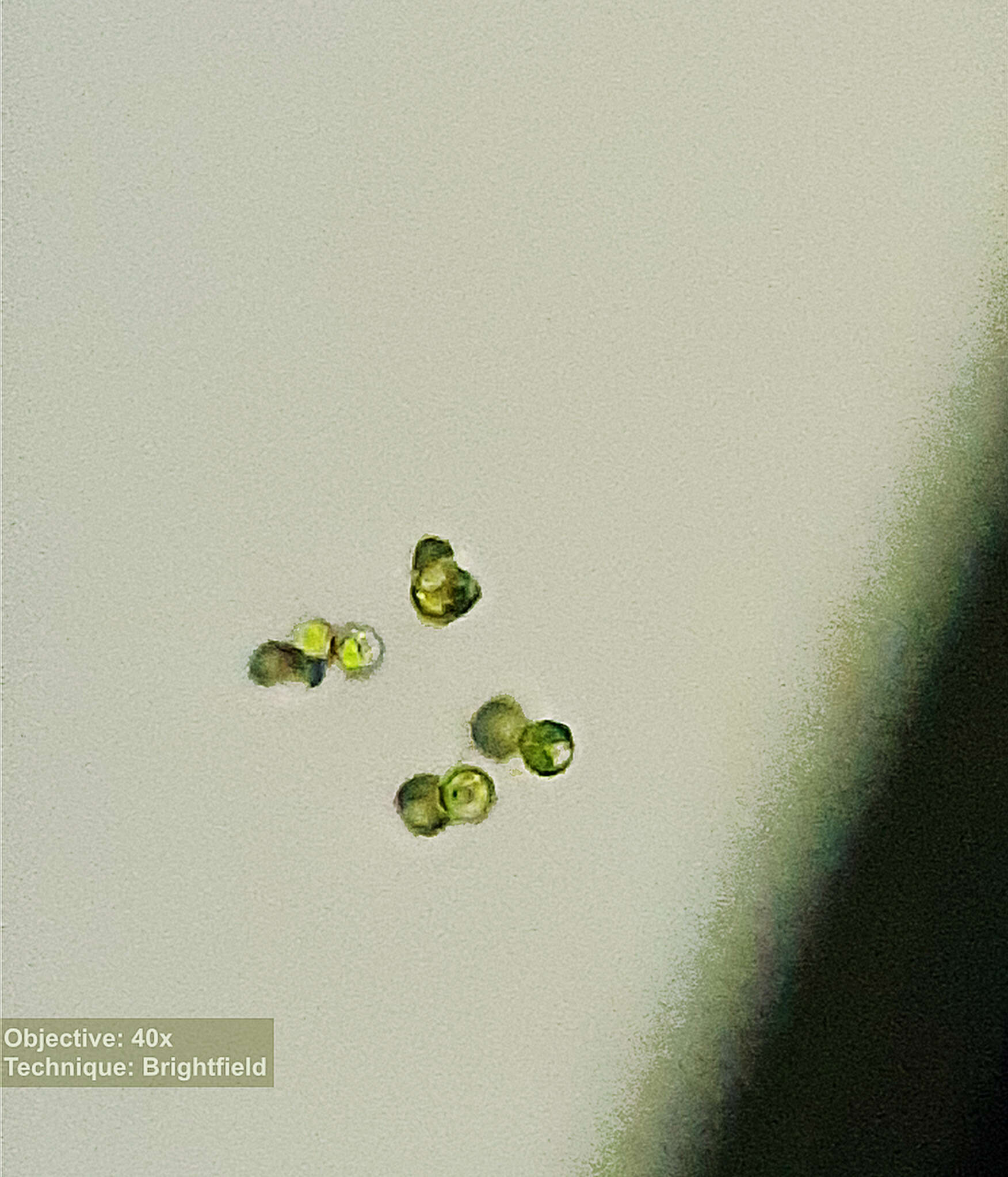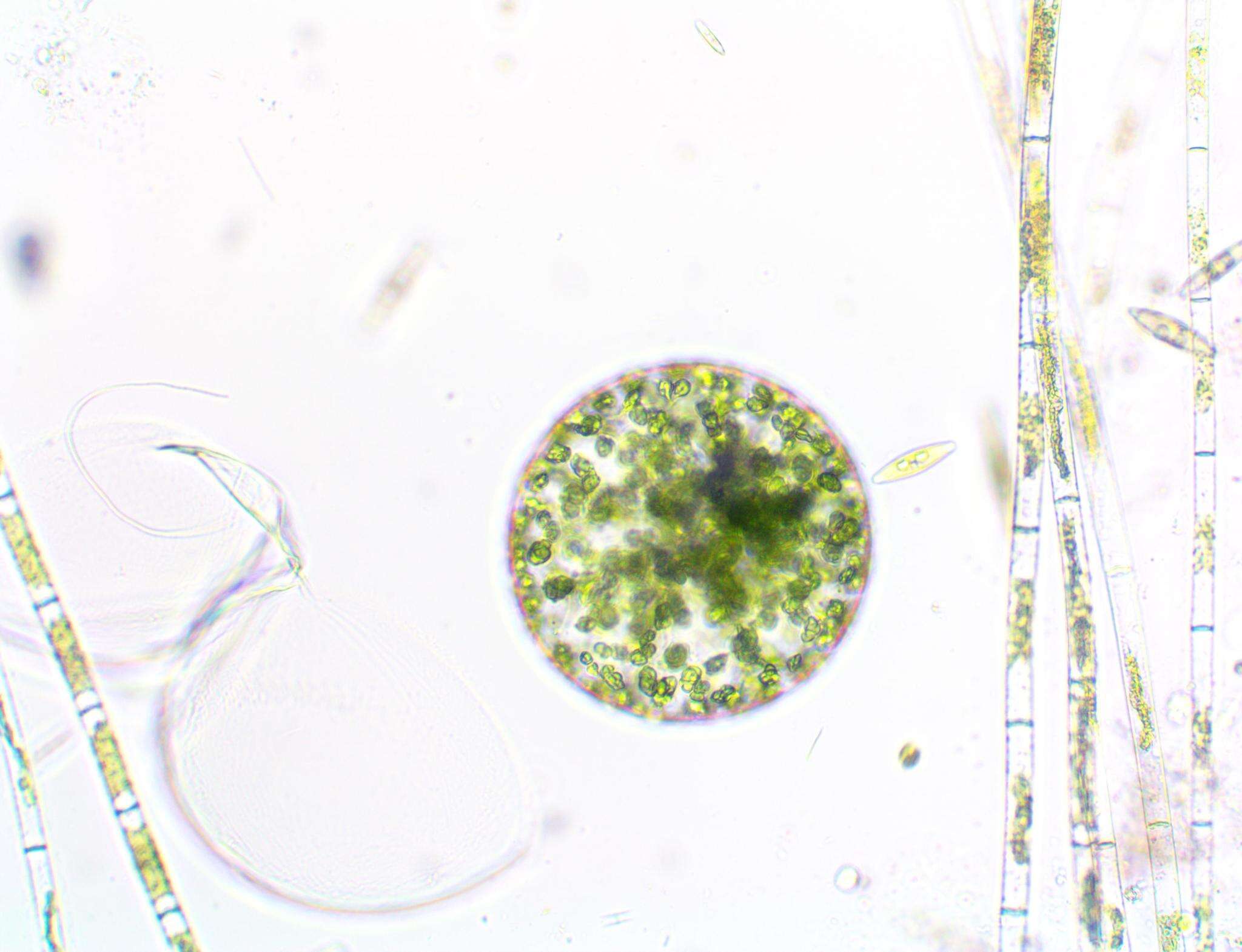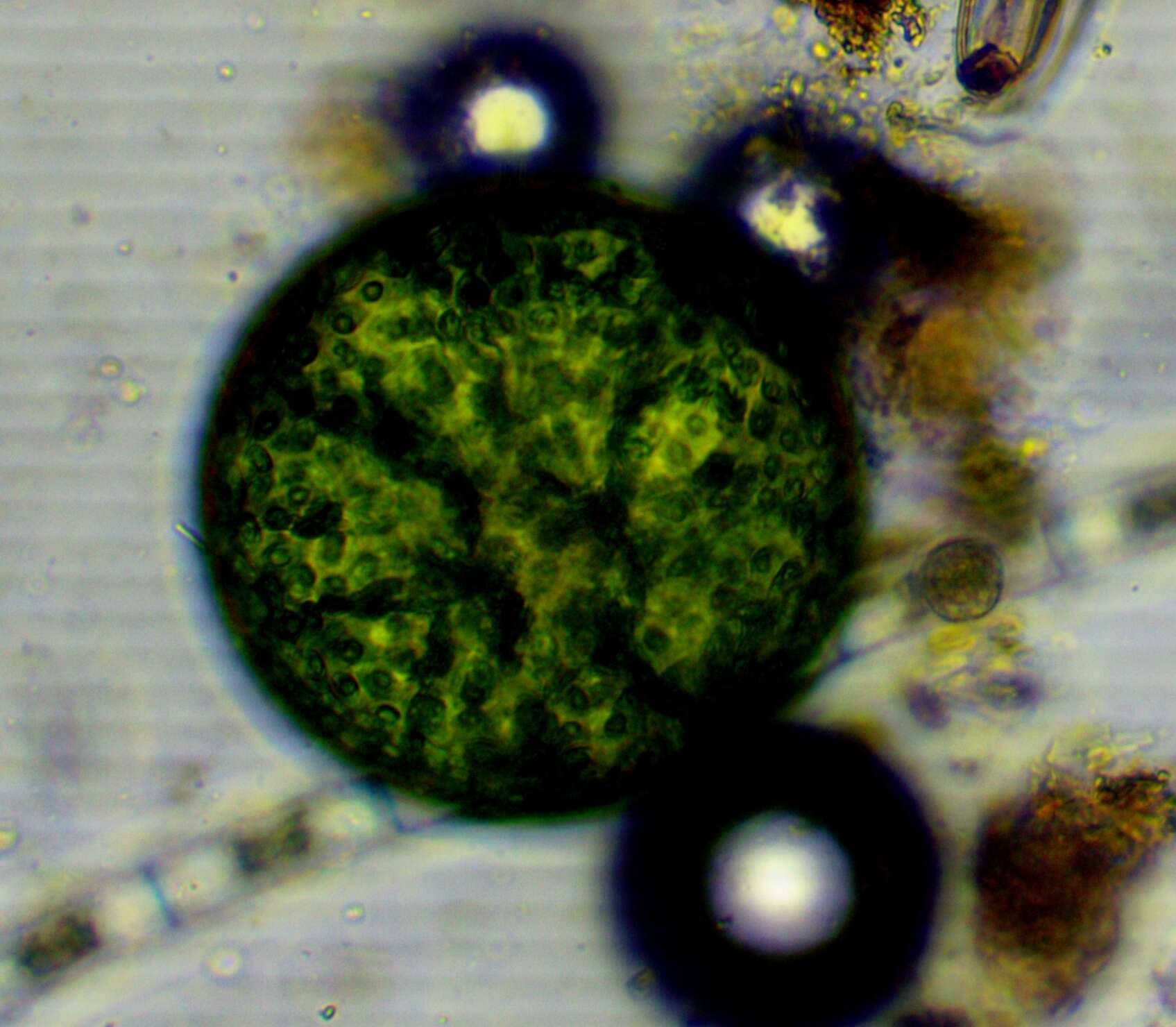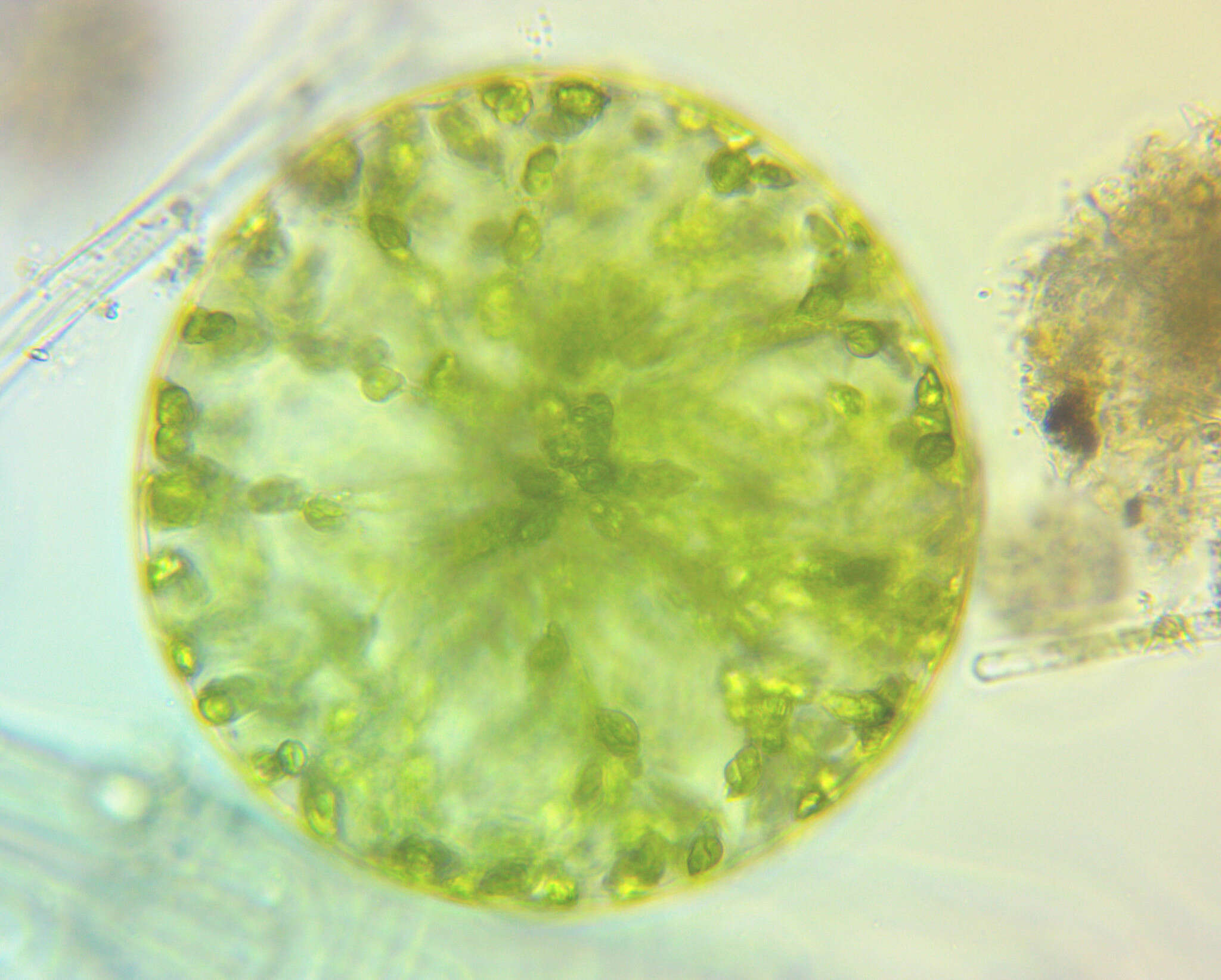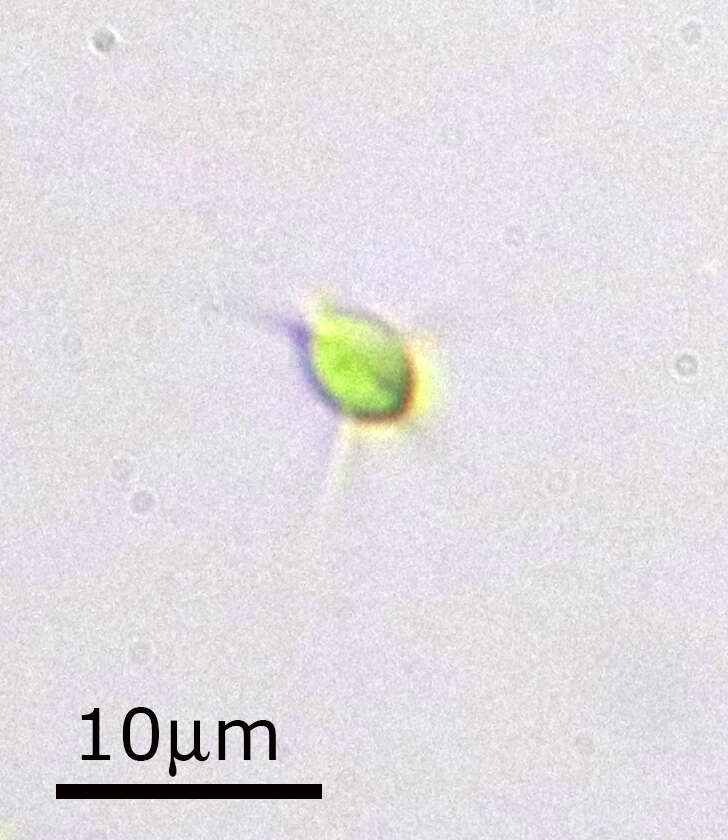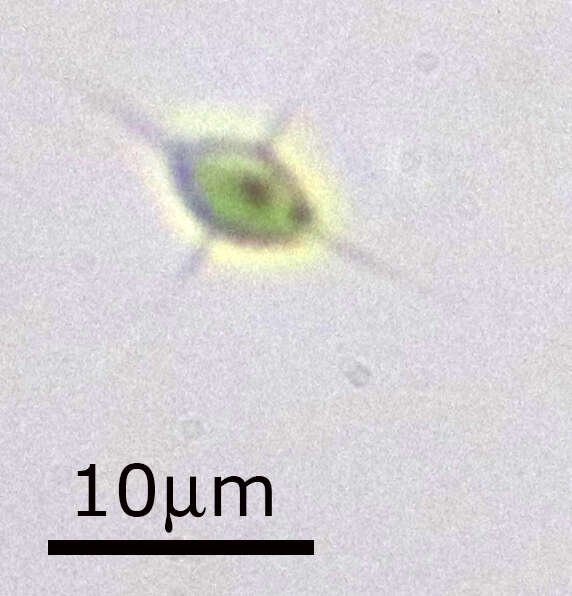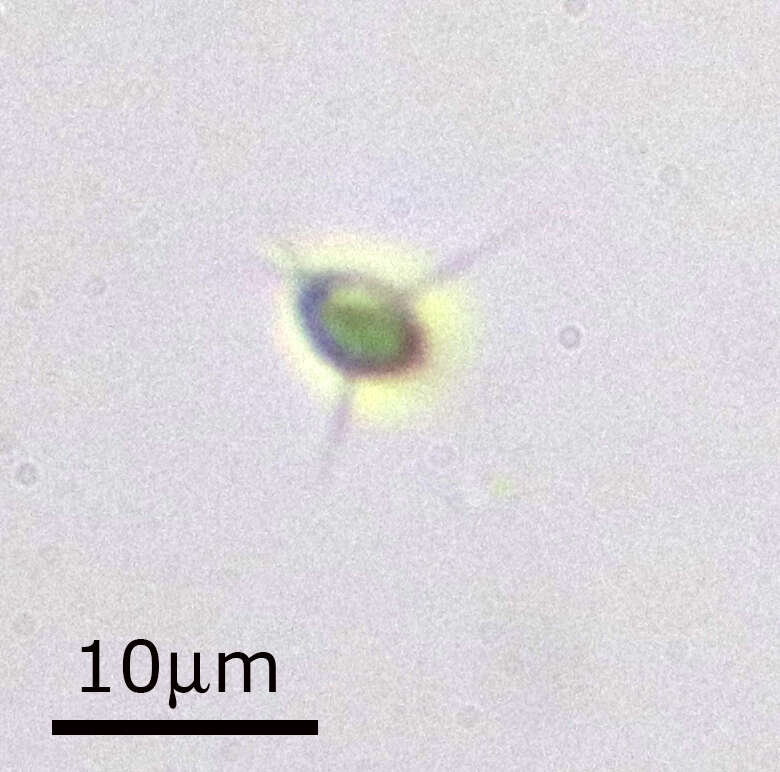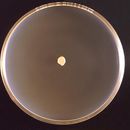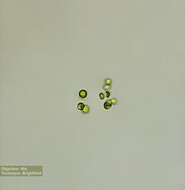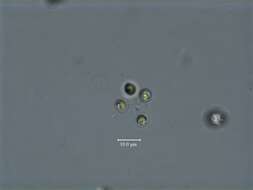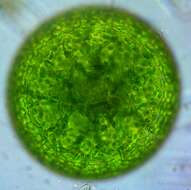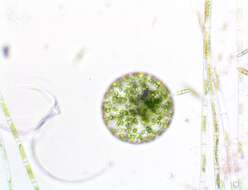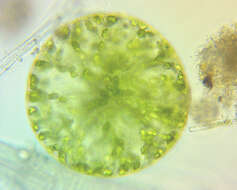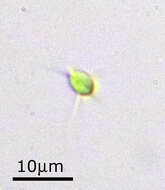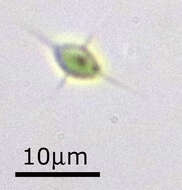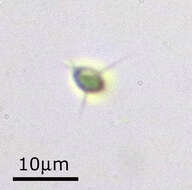-
This 1971 image depicted a frontal view of a Petri dish culture in which a small colony of Prototheca wickerhamii algal organisms had been cultivated.Created: 1971
-
At a magnification of 1125X, this photomicrograph revealed the presence of a number of Prototheca wickerhamii algal organisms.Created: 1971
-
Under a magnification of 1125X, this photomicrograph revealed the presence of numbers of algal organisms, Prototheca wickerhamii, which were found within a tissue specimen. Though categorized taxonomically as an alga, it derives its sustenance as a saprophyte, consuming dead and decaying organic matter. This algal culture was prepared using a lactophenol cotton blue mount fixation technique.Under microscopic analysis, Prototheca spp. resemble a fungal organism, and can therefore, be mistaken when attempting to identify these algae.Similar to the members of the genus Chlorella, Prototheca spp. are heterotrophic, , which means these organisms require carbon in order to thrive, and obtains this nutrient through its consumption of organic substrates. This algal culture was prepared using a lactophenol cotton blue mount fixation technique.Created: 1972
-
Under a magnification of 500X, this Gridley-stained photomicrograph revealed the presence of numbers of algal organisms, Prototheca wickerhamii, which were found within a specimen of deer tissue. Though categorized taxonomically as an alga, it derives its sustenance as a saprophyte, consuming dead and decaying organic matter.Under microscopic analysis, Prototheca spp. resemble a fungal organism, and can therefore, be mistaken when attempting to identify these algae.Similar to the members of the genus Chlorella, Prototheca spp. are heterotrophic, , which means these organisms require carbon in order to thrive, and obtains this nutrient through its consumption of organic substrates. This algal culture was prepared using a lactophenol cotton blue mount fixation technique.Created: 1972
-
This photomicrograph depicts the presence of Prototheca wickerhamii in a case of protothecosis.Created: 1971
-
Note the histopathologic changes in protothecosis of the skin and mucous membrane of the nose due to P. wickerhamii.Created: 1973
-
This photomicrograph confirms the presence of Prototheca wickerhamii, an achlorophyllic algae.Created: 1972
-
This photomicrograph depicts the presence of Prototheca wickerhamii using a lactophenol cotton blue mount technique.Created: 1972
-
At a magnification of 1125X, this photomicrograph revealed the presence of a number of Prototheca zopfii algal organisms.Created: 1971
-
This photomicrograph depicts the histopathology associated with protothecosis in a dog due to Prototheca zopfii.Created: 1972
-
This 1971 image depicted a Sabourauds dextrose agar slant culture, which had cultivated a colony of Chlorella sp. algal organisms.Created: 1971
-
This 1971 image depicted a frontal view of a Petri dish culture in which a small coloney of Chlorella algal organisms had been cultivated.Created: 1971
-
At a magnification of 1125X, this photomicrograph revealed the presence of a number of Chlorella sp. algal organisms.Created: 1971
-
-
-
-
-
-
-
-
-
-
-


